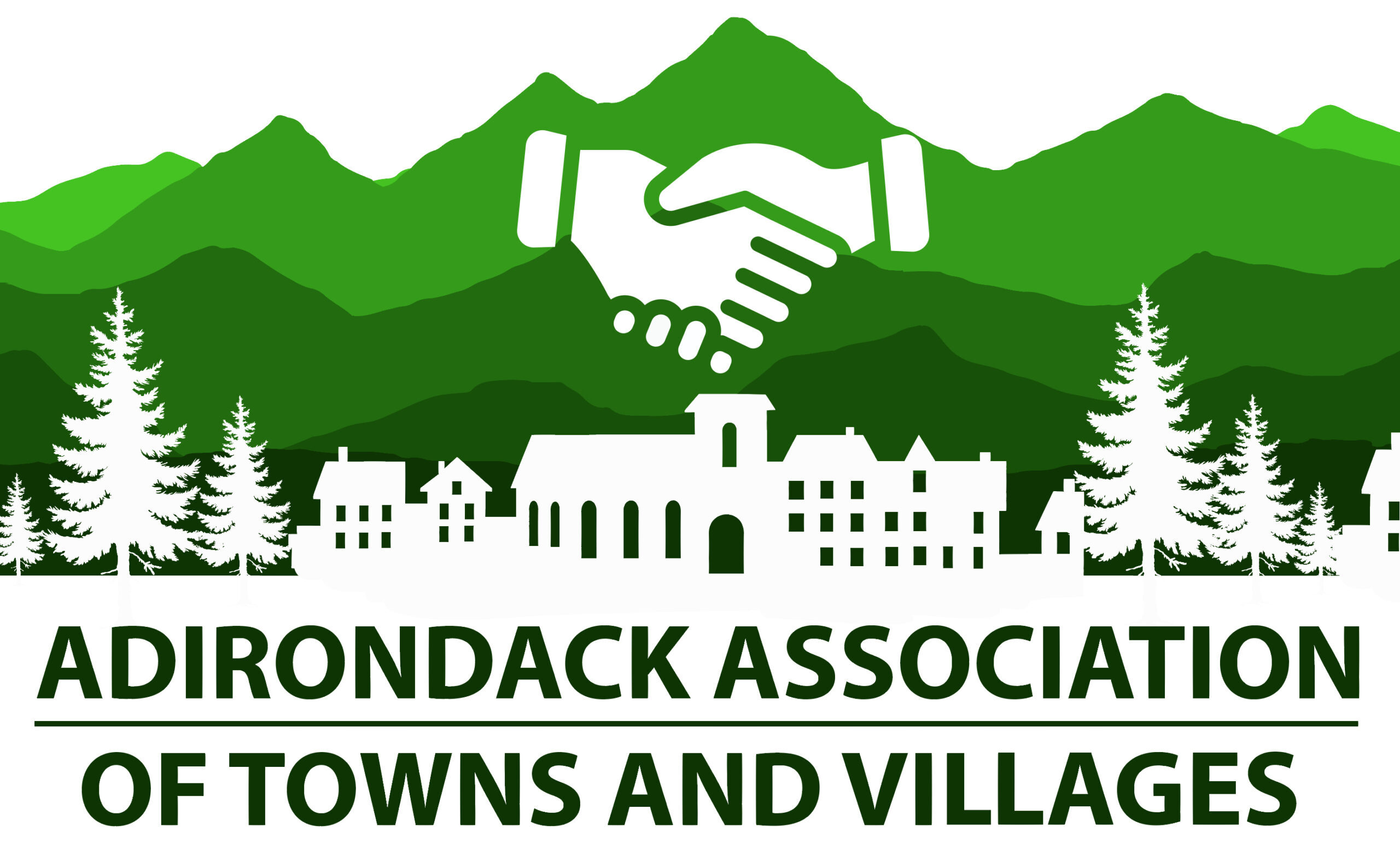AATV: REPRESENTING ADIRONDACK COMMUNITIES
The Adirondack Association of Towns and Villages (AATV) is a membership organization representing the 101 towns and villages within the Adirondack Park. We are a non-partisan alliance of local elected officials who address issues of concern to local communities and local governments, full-time and seasonal residents, businesses, and visitors. AATV was formed by local elected officials to provide a unified, informed and responsible voice to encourage meaningful dialogue and achieve constructive solutions that benefit all stakeholders. Our mission is to educate policymakers and decision-makers about the reality of life in the Adirondacks, to work with other interested groups, and to support solutions that protect the Adirondack environment and open space while ensuring sustainable economic opportunities and the well being of residents and visitors.
STATE OF THE ADIRONDACKS, JANUARY 2020
The Adirondack Region is unique in New York State (and in the nation). It is the only region where roughly 84 percent of all the land is committed to preservation, conservation, recreation and resource management. Nearly half of the land in the region is owned outright by the State of New York and held permanently as Forest Preserve where no building or development are allowed. The lands that remain in private ownership – which diminish in number and acreage as more and more are acquired by the state or private environmental organizations — are highly regulated to limit development.
As a result, this forested region of 10,000 mountain lakes and 30,000 miles of rivers and
streams is one of the most breathtakingly beautiful on Earth. It is the single largest
constitutionally protected landmass in the contiguous United States — at once a vast forested area and home to 130,000 full-time residents living in about 100 small communities. And it is that combination of human communities and natural splendor that creates both its enchanting appeal and its complex policy challenges: How to protect this special place and respect and meet the needs of people who live there – and the hundreds of thousands who visit? How to preserve sensitive natural areas and furnish essential goods and services? How to preserve small school districts and ambulance and fire services in small, remote communities as people age and populations decline? How to create sustainable economic opportunity to reverse the decline in population and encourage young people to stay?
The Adirondack region is one of the most economically challenged areas of New York State. Its legacy industries, forestry and mining and trapping, robust engines of the economy for generations, have sharply declined or disappeared. Tourism is the other great Adirondack legacy industry. It is healthy and growing, but remains largely seasonal, which limits the magnitude of private-sector investment in future growth. Its seasonality also means tourism provides limited opportunities for permanent, career-oriented jobs that would support a family. Public-sector employers sustain most Adirondack families. Local colleges, school districts and municipalities, and New York State agencies and facilities remain the most stable sources of permanent jobs with good pay and benefits. But increasing pressure on state and local governments to reduce spending means these opportunities are not likely to grow.
The inevitable result is that Adirondack communities see continued out-migration of young people, families and college-educated citizens. School enrollment is declining. Grocery stores have disappeared because there are too few customers to support them. The vision of entrepreneurs writing code in quaint mountain cabins is largely fiction because broadband service is so limited. It is true that there are authors, artists and freelancers happily making a living in the Adirondacks, but they create few jobs for others. The people who remain in the Adirondacks are predominantly seniors aging in place. The Adirondack region now has one of the oldest populations in the country. It’s a population that tends to rely more on volunteer fire departments and ambulances and yet these organizations encounter great difficulty finding young new members not because they are unwilling to serve but because young people often need to work two or three jobs to make ends meet. These volunteers have an onerous amount of training and there is a lack of training facilities and trainers.
It would be a mistake to conclude that the need for jobs, economic opportunity and public and private services is confined to the small and declining population of permanent Adirondackers. Hundreds of thousands of people – including many from other parts of New York State – come to the Adirondacks in every season. They come to have fun, explore the lakes and mountains, ski, swim and hike, but they, too, need emergency services, hospitals, safe highways, gasoline and food. The Adirondack High Peaks are more popular than ever as a hiking destination, so much so that state and local officials are working to manage the crowds, provide adequate, safe parking, and maintain the trails.
New York State spends millions of dollars each year urging people to explore the Adirondacks. When they come, as they do in droves, there must be adequate, up-to-date services and facilities.
And so this is our shared challenge: How to balance protection of our unique environmental assets and our vital human communities so that the natural communities are preserved and the human communities prosper.
The Adirondack Park Agency Act enshrined this concept of balance in 1971. The Statement of Legislative Findings and Purposes of the APA Act (§ 801) recognizes “the complementary needs of all the people of the State for the preservation of the Park’s resources and open space character and of the Park’s permanent, seasonal and transient populations for growth and service areas, employment, and a strong economic base, as well. In support of the essential interdependence of these needs, the plan represents a sensibly balanced apportionment of land to each.”
Nearly 50 years later, preserving the Adirondacks means preserving both the wilderness and the human communities that make the region unique in the world.
